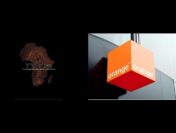During a recent symposium organised by Gartner, Inc, analysts spoke on the top 10 technology trends that will be strategic for most organizations in 2016 and will have a significant impact on the organization. Factors that denote significant impact include a high potential for disruption to the business, end users or IT, the need for a major investment, or the risk of being late to adopt. These technologies impact the organization’s long-term plans, programs and initiatives.
“Gartner’s top 10 strategic technology trends will shape digital business opportunities through 2020. The first three trends address merging the physical and virtual worlds and the emergence of the digital mesh. While organizations focus on digital business today, algorithmic business is emerging. Algorithms — relationships and interconnections — define the future of business. In algorithmic business, much happens in the background in which people are not directly involved. This is enabled by smart machines, which our next three trends address. Our final four trends address the new IT reality, the new architecture and platform trends needed to support digital and algorithmic business,” said David Cearley, vice president and Gartner Fellow.
Some of the top strategic technology trends for 2016 are:
The Device Mesh
The device mesh refers to an expanding set of endpoints people use to access applications and information or interact with people, social communities, governments and businesses. The device mesh includes mobile devices, wearable, consumer and home electronic devices, automotive devices and environmental devices — such as sensors in the Internet of Things (IoT). “In the post-mobile world the focus shifts to the mobile user who is surrounded by a mesh of devices extending well beyond traditional mobile devices,” said Mr. Cearley.
Ambient User Experience
The device mesh creates the foundation for a new continuous and ambient user experience. Immersive environments delivering augmented and virtual reality hold significant potential but are only one aspect of the experience. The ambient user experience preserves continuity across boundaries of device mesh, time and space.
3D Printing Materials
Advances in 3D printing have already enabled 3D printing to use a wide range of materials, including advanced nickel alloys, carbon fiber, glass, conductive ink, electronics, pharmaceuticals and biological materials. These innovations are driving user demand, as the practical applications for 3D printers expand to more sectors, including aerospace, medical, automotive, energy and the military.
Information of Everything
Everything in the digital mesh produces, uses and transmits information. This information goes beyond textual, audio and video information to include sensory and contextual information. Information of everything addresses this influx with strategies and technologies to link data from all these different data sources.
Advanced Machine Learning
In advanced machine learning, deep neural nets (DNNs) move beyond classic computing and information management to create systems that can autonomously learn to perceive the world, on their own. The explosion of data sources and complexity of information makes manual classification and analysis infeasible and uneconomic. DNNs automate these tasks and make it possible to address key challenges related to the information of everything trend.
Internet of Things Platforms
IoT platforms complement the mesh app and service architecture. The management, security, integration and other technologies and standards of the IoT platform are the base set of capabilities for building, managing and securing elements in the IoT. IoT platforms constitute the work IT does behind the scenes from an architectural and a technology standpoint to make the IoT a reality. The IoT is an integral part of the digital mesh and ambient user experience and the emerging and dynamic world of IoT platforms is what makes them possible. “Any enterprise embracing the IoT will need to develop an IoT platform strategy, but incomplete competing vendor approaches will make standardization difficult through 2018,” said Mr. Cearley.





